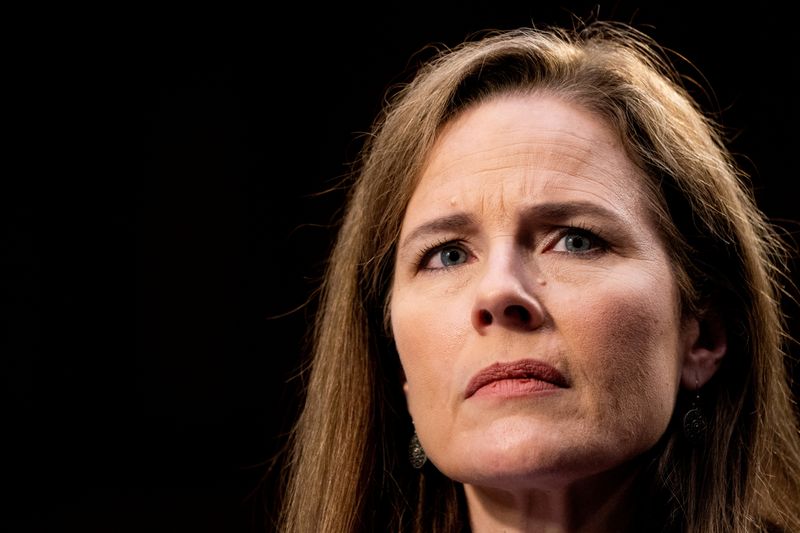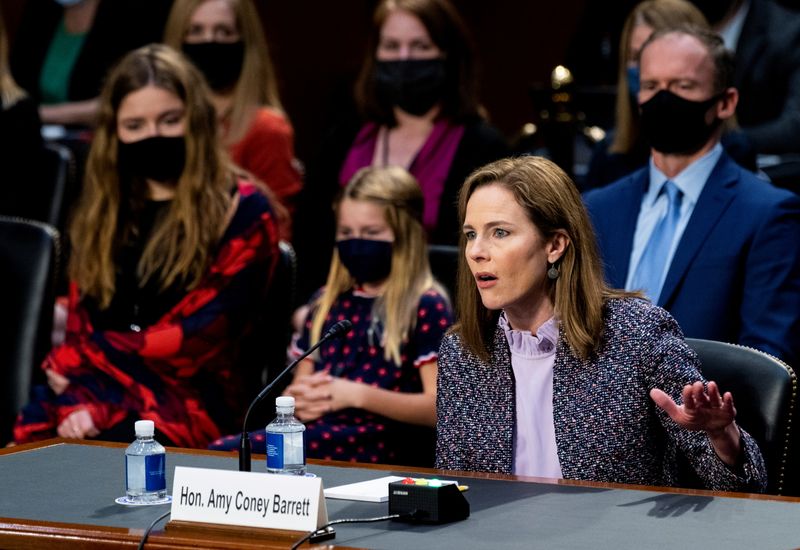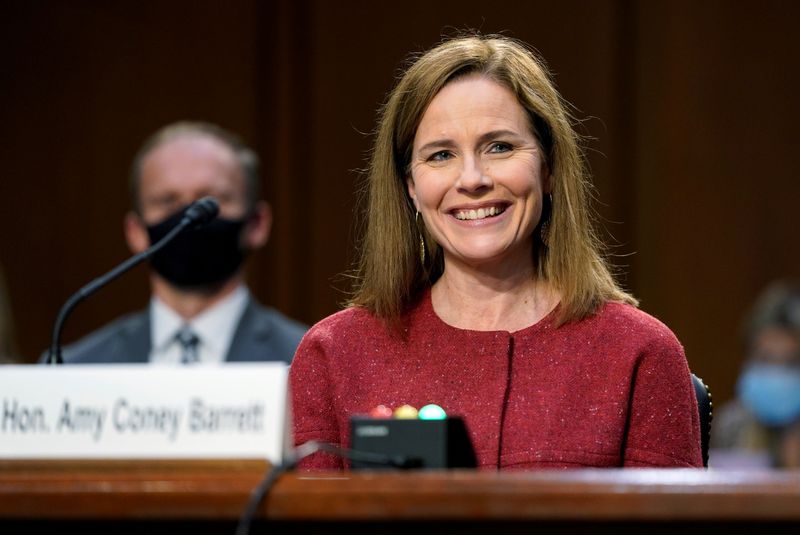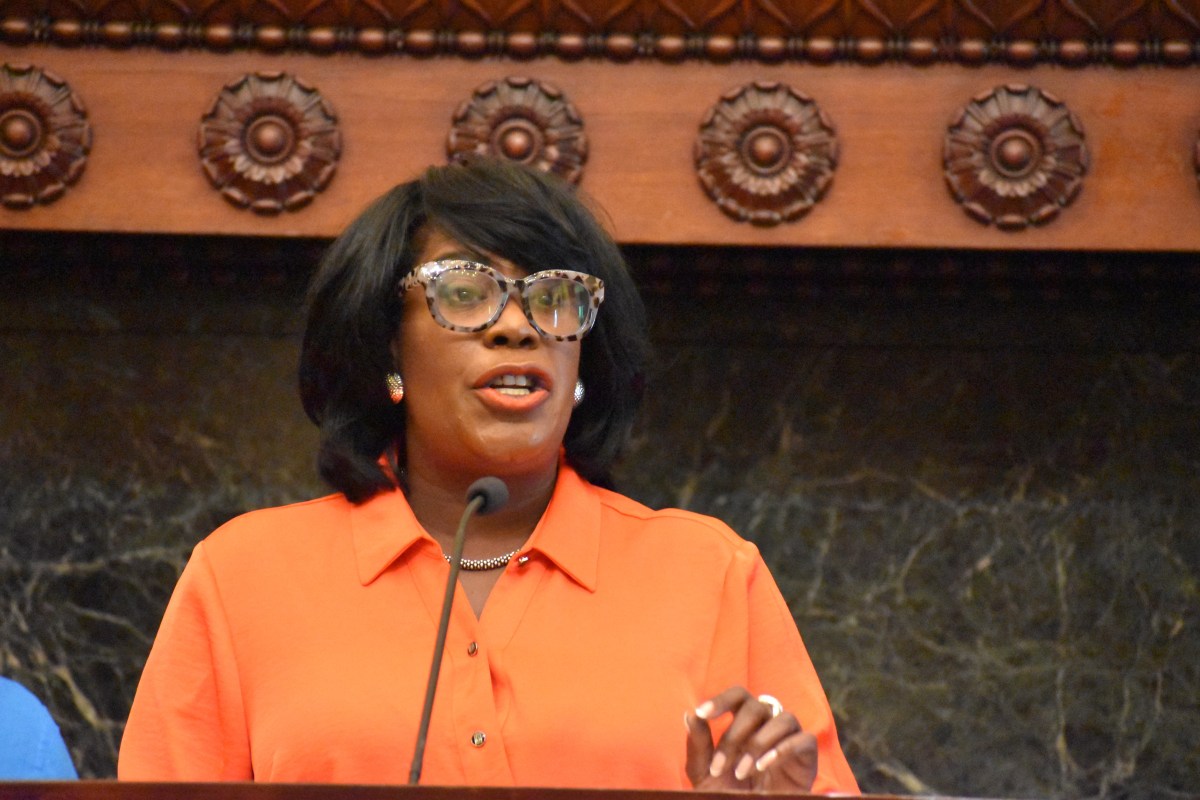WASHINGTON (Reuters) – Justice Amy Coney Barrett blazed her own path during her rookie term on the U.S. Supreme Court, helping a conservative majority prevail in major cases while at times defying expectations after critics last year tried to paint her as a right-wing zealot.
Her record suggests she has joined the center of a court with a 6-3 conservative majority rather than its right flank, often associated with Justices Clarence Thomas, Samuel Alito and Neil Gorsuch. As such, she seemed to be on the same ideological wavelength as two other fellow conservatives, Chief Justice John Roberts and Justice Brett Kavanaugh.
Republican former President Donald Trump named Barrett to replace liberal Justice Ruth Bader Ginsburg, who died in September. After tense confirmation hearings, Barrett was confirmed by the Senate in October, with no Democrats supporting her. Democrats even boycotted the Judiciary Committee’s vote on sending her nomination to the full Senate.
“During her confirmation hearings, Justice Barrett said that she would be her own justice,” said Allyson Ho, a Dallas-based attorney who has argued cases before the Supreme Court.
“And so far,” Ho added, “that’s exactly what she’s done.”
Barrett experienced a unique first term as the justices heard oral arguments by teleconference with the courthouse closed to the public amid the COVID-19 pandemic. Barrett was a sharp but polite questioner during those arguments.
She solidified the court’s rightward tilt, as shown in major cases decided along ideological lines.
Those included two 6-3 rulings on Thursday in which the conservative majority in an Arizona case gave states https://www.reuters.com/world/us/voting-rights-breyers-future-spotlight-us-supreme-court-2021-07-01 more leeway to enact voting restrictions while striking down https://www.reuters.com/world/us/us-supreme-court-backs-conservatives-against-california-donor-disclosure-2021-07-01 a California charity donor disclosure requirement in a move that could erode campaign finance disclosure laws.
Barrett was part of another 6-3 ruling https://www.reuters.com/world/us/us-supreme-court-curbs-union-power-farm-access-dispute-2021-06-23 along ideological lines on June 23 limiting the ability of union organizers to enter agricultural businesses in California, another setback for organized labor.
NEXT TERM LOOMS
Major cases await Barrett in the court’s next term beginning in October. Her vote could be crucial in cases that could curb abortion rights and expand the right to carry a gun outside the home.
Based on her first term, some court observers have suggested that it now has something of a 3-3-3 split between liberals, conservatives willing to compromise and the more hardline conservatives. Voting statistics appear to bear that out. Barrett, Kavanaugh and Roberts were the three justices most often in the majority in the rulings during the term, according to statistics maintained by SCOTUSblog https://www.scotusblog.com/statistics.
Pratik Shah, a Washington lawyer who also has argued cases before the justices, said there is evidence that Barrett and Kavanaugh have sought compromises but questioned whether that would hold true in the long term.
“To me, the jury is still very much out on Justice Barrett,” Shah added, noting that the conservative majority is likely to remain for years and has no need to act quickly.
During her confirmation fight, some critics on the left cited Barrett’s devout Catholic beliefs and conservative scholarly writings to forecast that she would readily overturn court precedent and endanger recognized personal rights such as abortion. Instead, Barrett in some key cases chose a different path than her most conservative colleagues.
On June 17, the justices unanimously ruled against Philadelphia for barring a Catholic agency from participating in the city’s foster care program because it refused to consider same-sex couples as foster parents. The ruling could open the door to discrimination against LGBT people by religiously based social service agencies.
But six justices including Barrett rejected a call to go further and overturn a 1990 Supreme Court precedent, known as Employment Division v. Smith, that upholds laws that are neutral and generally applicable even if they happen to place a burden on religion. Barrett, in a separate opinion, wrote that she sees “no reason to decide in this case whether Smith should be overruled, much less what should replace it.”
Mark Rienzi, a lawyer with the Becket Fund for Religious Liberty https://www.becketlaw.org legal group, said Barrett’s writings on religious issues have shown “she is a careful thinker who takes the job seriously.”
In one of several decisions in favor of religious challenges to pandemic-related restrictions, Barrett wrote a separate opinion in February rejecting a California church’s bid to lift a state prohibition on singing and chanting during services. The church, Barrett wrote, did not demonstrate that it was entitled to such relief. Gorsuch, Thomas and Alito disagreed with her on that point.
Barrett was in the majority in a 7-2 ruling https://www.reuters.com/business/healthcare-pharmaceuticals/us-supreme-court-rejects-republican-challenge-obamacare-law-2021-06-17 on June 17 against a Republican-led bid to strike down the Obamacare healthcare law. During her Senate confirmation hearings, some Democrats warned that she would vote to strike down the law if confirmed.
She wrote four rulings in cases argued during the term and three dissents. In another example of the court ruling not along ideological lines, Barrett authored a 6-3 decision https://www.reuters.com/technology/us-supreme-court-limits-reach-federal-computer-fraud-law-2021-06-03 on June 3 limiting the scope of a computer-fraud law, joined by the court’s three liberals as well as Trump’s two other appointees, Kavanaugh and Gorsuch.
(Reporting by Lawrence Hurley and Andrew Chung; Editing by Will Dunham)























